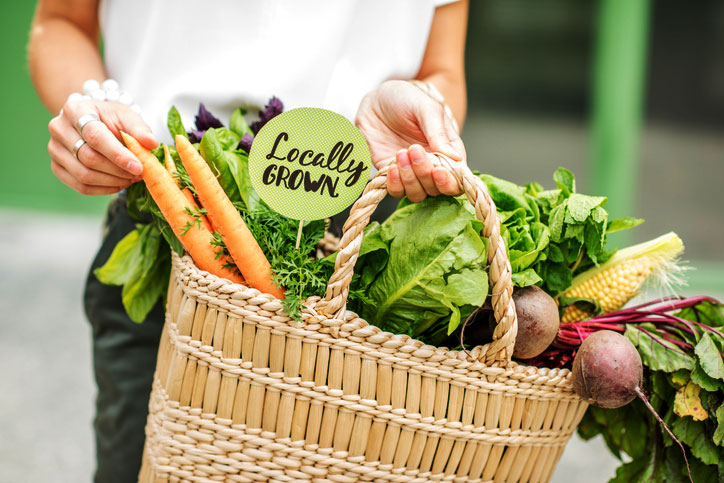‘Locavorism’ is gaining popularity as the movement towards a more sustainable way of living has highlighted the negative impact on the environment of transporting foods across long distances. This, coupled with increased awareness of health, wellness, and the quality of food we are consuming, has seen an increase in the popularity of eating fresh, local produce, grown or produced close to home.
What is Locavorism?
Locavorism is a term believed to have been coined in 2005 by a group on the West Coast of the USA who, committed to supporting local farmers, started a movement to only eat produce grown or produced within a certain radius. While the exact parameters of what can be classed as eating locally are subject to debate, the more general consensus is that it refers to anything produced within 100 miles. But while committing to a diet based only on local produce may seem restrictive for many, the movement is gaining traction as we increasingly seek to embrace a more sustainable way of life. Eating food sourced from local producers typically requires less energy to transport and store. As a result, it is kinder to the planet than food dependent on long flights and cross-country road trips to make its way to our dinner plates.

A healthier alternative
But other than the eco-friendly benefits of locavorism, many favour this way of eating for different reasons. Locally produced food with significantly reduced transport times means by the time it lands on our plate, it has more nutrients, is healthier and, in general, tastier. Local produce is also unlikely to be subjected to the preservatives and chemicals required to extend its shelf life as it embarks on cross-continent travels via trucks and distribution centres. The vastly shorter distribution chain also means the likelihood of spoilage is reduced, therefore minimising wastage.
Community investment
Eating food grown and produced locally can result in significant economic benefits for communities. Supporting local farmers and businesses generates growth within the local economy, creating jobs and economic resilience. Supporting local food production means investment is directed towards local communities as opposed to fuelling the growth of global supply chains, some of which have been associated with exploitative global practices.
A flexible approach
While there is no doubt that locavorism can support efforts to lead a more sustainable and healthier way of life, it has limitations, which may mean it’s not a practical option all of the time. The diversity of produce available will depend on where you live in the world and related seasonality – those living through long, cold, and dark winters may find relying on locally sourced produce too restrictive. Even those living in more temperate climates may struggle with the thought of never eating a banana or pineapple again. Here, a flexible approach can work, where a locally sourced diet is preferred in the summer months, and in the winter, the rules are relaxed somewhat to allow for some choice and diversity in your diet.
It is also worthwhile pointing out that local does not necessarily mean cheaper. The economies of scale associated with the world’s large food producers can make locally sourced produce comparatively expensive even when the transportation and storage costs are taken into account.
A worthwhile lifestyle choice
However, despite challenges such as reduced availability and potentially higher costs, embracing the principles of locavorism can be an impactful solution for many individuals and communities seeking to live a more environmentally friendly lifestyle. While strict adherence to the movement may not be for everyone, especially those in colder climates, even embracing elements of the movement can result in lasting benefits for both the environment and community, making it a worthwhile lifestyle choice.
